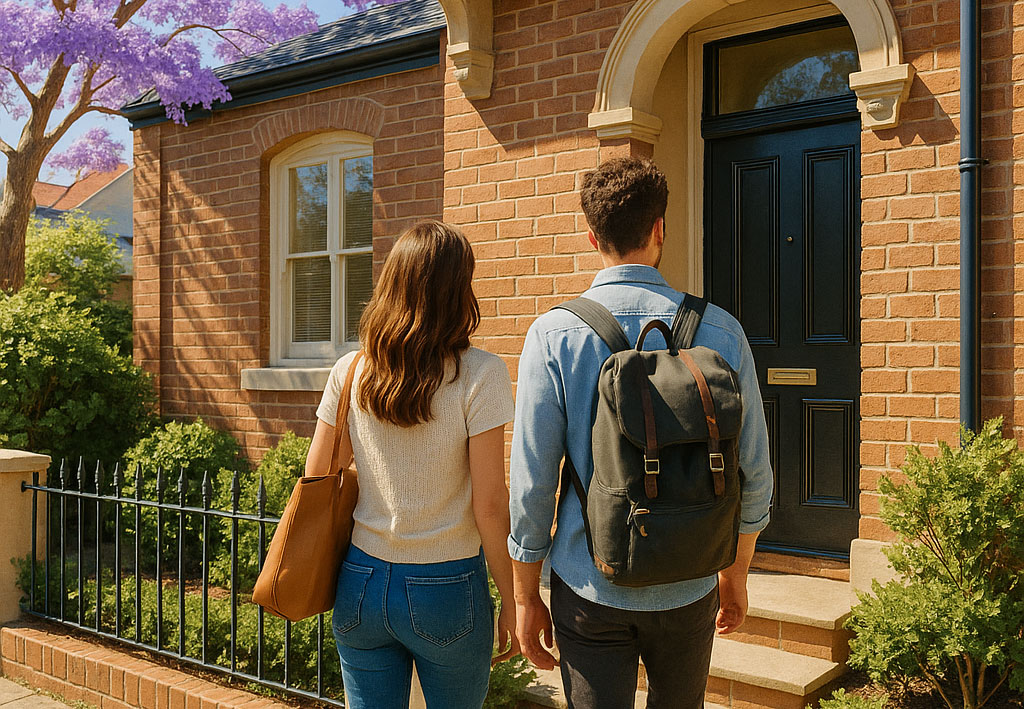Families and first-home buyers in Sydney have just been handed the biggest shake-up to government assistance in years. From 1 October 2025, the Australian Government is expanding the Home Guarantee Scheme (HGS) in several sweeping ways: unlimited places, no income caps, and higher property price caps. For many buyers, that’s a game-changer for how—and when—to purchase this Spring. Alongside existing NSW support (stamp duty relief and the First Home Owner Grant), the new settings could accelerate activity across Sydney’s sub-$1.7m market and re-shape the flow of listings and auctions through October and November. Prime Minister of Australia & Housing Australia
This guide unpacks the changes in plain English, explains why they matter, and maps out practical steps for Sydney buyers navigating the Spring selling season. We’ll cover stock levels, timing, the unique dynamics of Spring, and what may happen to prices in the entry-to-mid market segments. We’ll also outline how NSW’s transfer duty concessions and $10,000 grant fit into the puzzle—and why working with a buyer’s agent can help you avoid pitfalls and move decisively.

5 fast points
- The federal changes land mid-Spring: The new HGS settings start 1 October 2025, right as Sydney’s Spring market hits its stride, which is likely to concentrate demand in October–November.
- 5% deposits without LMI keep spreading: With unlimited places and no income caps, more first-home buyers can buy with as little as 5% deposit and avoid lenders’ mortgage insurance (LMI)—a five-figure saving for many.
- NSW help still matters: The First Home Buyers Assistance Scheme (stamp duty relief up to $800k and concessions up to $1m) and the $10,000 First Home Owner Grant (new homes) remain powerful stackable supports. Revenue NSW
- Price pressures are a real risk: Several analysts warn the expanded federal scheme could push prices higher in the short run, especially in the price brackets targeted by first-home buyers. Plan your search and finance early. News.com.au & The Guardian
- Spring listings usually lift: Spring reliably brings more stock and auctions to Sydney than winter, giving buyers more choice—but also more competition around the most family-friendly price points and suburbs. The Real Estate Conversation
What exactly is changing on 1 October 2025?
The federal Home Guarantee Scheme (HGS) is expanding
From 1 October 2025, the Commonwealth will broaden the HGS to bring more first-home buyers forward into ownership. The headline changes are:
- Unlimited places: No cap on the number of guarantees available.
- No income caps: Removal of income eligibility limits.
- Higher property price caps: To better reflect market reality in expensive cities like Sydney.
- Buy with as little as 5% deposit and avoid LMI: The government guarantee stands in for part of your deposit, saving many buyers tens of thousands in LMI.
These points have been publicly confirmed by the Prime Minister’s office and by Housing Australia (which administers the scheme).
Why this matters: Previously, many first-home buyers missed out because places ran out, they edged over the income threshold, or Sydney’s price caps were too low for realistic options. Removing those barriers opens the gate for a much larger cohort of buyers.
NSW schemes that still apply (and how they stack)
- First Home Buyers Assistance Scheme (FHBAS):
NSW provides a full transfer duty (stamp duty) exemption up to $800,000, and a concessional rate from $800,000 to under $1,000,000, for eligible first-home buyers (new or existing homes). There are also thresholds for vacant land. Residency and eligibility rules apply. - First Home Owner Grant (FHOG):
A $10,000 grant is available for newly built or substantially renovated homes (eligibility and price criteria apply). This is separate to stamp duty relief and can complement federal support.
Stacking supports: Many Sydney buyers will combine the federal guarantee (to reduce deposit/LMI) with NSW stamp duty concessions or the $10,000 FHOG (if buying new), meaning a materially lower cash outlay on day one.
Why these changes are such a big deal for families and first-home buyers
a) Deposit hurdles fall—without compromising serviceability checks
The deposit is the primary barrier to entry in Sydney. Allowing a 5% deposit (backed by a government guarantee) while avoiding LMI can save many households $20,000–$40,000+ in insurance premiums depending on price and lender. That immediately pulls forward purchasing timelines by months or years. The bank still assesses serviceability as usual; you must be able to afford the loan under today’s interest-rate buffers and responsible lending rules.
b) Unlimited places end the “race and waitlist” anxiety
Under past settings, buyers often scrambled to apply as soon as new HGS allocations opened and missed out once quotas were filled. With no cap on places, you shouldn’t be forced to choose between a dud property today or risking your place in the queue. That’s a psychological and practical win for families that need more time to shortlist suburbs, schools and commute options.
c) No income caps removes a blunt barrier that didn’t reflect Sydney reality
Dual-income families in Sydney frequently earn above the old thresholds while still battling deposit and LMI challenges. Removing income caps recognises the unique price levels in Sydney: you can be on a “good income” and still need help with deposit friction in a city where entry-level family homes commonly sit well above the national median.
d) Higher property price caps reconnect the scheme to real inventory
Historically, Sydney’s property cap under the HGS constrained genuine choice to a relatively thin slice of the market. Raising caps (alongside NSW duty relief settings) directs assistance at the properties families actually want to live in—townhouses, family apartments, and modest freestanding homes within commuting distance of jobs and schools. Federal announcements flagged that caps will rise to better reflect market conditions; some reporting suggests Sydney’s cap will be around $1.5m, which—while not covering every suburb—brings materially more stock into play. (Confirm the exact cap for your target postcode with a participating lender or Housing Australia’s tool.)

How the changes are likely to affect Sydney’s market: stock, timing, Spring and price
Spring in Sydney: why the 1 October date matters
Sydney’s Spring selling season (September–November) typically brings a surge in new listings and auctions compared with winter. CoreLogic’s long-run analysis shows Spring routinely lifts fresh listings and sales volumes—and weekly auction reports each October often capture some of the busiest auction weeks of the year in Sydney.
With the federal changes landing right at the start of October, we should expect a demand bulge to coincide with the traditional supply bulge:
- Buyers who were on the fence in August–September may delay a few weeks to exchange after 1 October to secure HGS eligibility.
- Vendors and agents, anticipating stronger competition, may time campaigns to launch in late September so the pointy end of the auction campaign falls in October/November.
- The presence of unlimited places reduces “fear of missing out” on the scheme—but in practice, the excitement of a lower deposit plus no LMI is likely to increase buyer registrations and open-home traffic in early/mid-October as mortgage pre-approvals catch up.
Stock levels: will more come to market—or be absorbed faster?
We see two counter-currents:
- More listings (the seasonal effect): Spring tends to deliver more new listings anyway. Even in cooler markets, Spring attracts sellers who prefer gardens in bloom, better weather for opens, and a settled school-year timeline. In recent years, CoreLogic has recorded Spring weeks with 1,000+ Sydney auctions, demonstrating the seasonal depth.
- Faster absorption in target price bands: The new HGS settings focus buyer attention on sub-$1.5m segments (subject to final caps by postcode). Expect townhouses and family apartments across the Inner West, Lower North Shore fringe, South, and Middle-ring West to see sharper clearance rates than more premium free-standing stock. If caps indeed reach ~$1.5m in Sydney, the available pool within those bands grows, but so does the buyer pool—absorption likely stays brisk.
Net effect: Through October–November, the effective stock on market for HGS-relevant segments may not feel much looser than usual because elevated demand meets seasonal supply. If you’re buying, plan your shortlist early and be ready to execute when the right property appears.
Timing: should you buy before or after 1 October?
If you can benefit from 5% deposit + no LMI under HGS, there’s a strong financial rationale to target exchanges on/after 1 October. Avoid cutting it fine: auction campaigns are three to four weeks, so a late-September listing often goes under the hammer in mid-to-late October—a neat alignment with the new settings.
However, if you’re bidding in a niche segment that sits above the HGS cap (e.g. a larger freestanding house in a tightly held pocket), the demand uplift may be weaker, and buying before October could provide quieter conditions. This is case-by-case; a buyers agent can help map pressure points suburb-by-suburb.
Price: could the scheme fuel a short-term uplift?
Multiple economists and reports have flagged that expanding low-deposit guarantees—especially with unlimited places and no income caps—could create short-term upward pressure on prices in the segments most targeted by first-home buyers. Some analyses suggest several percentage points of extra price growth could be pulled into 2025–26 at the entry-to-mid tiers, before effects fade as supply responds and demand normalises. Government communications have framed longer-run price impacts as modest, but the near-term heat is the concern for buyers planning now.
Where in Sydney is this most likely?
- Family-friendly townhouses and units within 30–50 minutes of major job hubs.
- Established, liveable suburbs close to schools, parks and transport (Inner West, parts of the North Shore/Northern Beaches fringe, North West growth corridors, St George/Sutherland, and pockets of the West with good rail links).
- New-build townhouses that also qualify for the $10,000 FHOG, giving buyers a “double boost.”
Spring clearance rates and negotiation dynamics
When buyer enquiry spikes, clearance rates tend to firm and the negotiation power tilts towards vendors—particularly for well-presented, fairly-priced homes in school catchments. Expect:
- Shorter days on market for properties within HGS-aligned price brackets.
- More pre-auction offers to lock in deals before competition crescendos.
- Tighter settlement windows (or, at least, reduced flexibility) unless your terms are otherwise compelling.
For buyers seeking to avoid bidding wars, consider suburbs one or two train stops further out, or slightly different dwelling types (e.g., larger 2-bed units with a study vs smaller 3-bed units). Small compromises can save six figures when competition is intense.
How NSW concessions fit into the new landscape
First Home Buyers Assistance Scheme (stamp duty relief)
Under NSW’s FHBAS, eligible buyers receive:
- Full transfer duty exemption up to $800,000, and
- Concessional duty from $800,000 to under $1,000,000 (new or existing homes), plus thresholds for vacant land. Residency rules apply (living in the property within 12 months and for at least 12 continuous months for contracts from 1 July 2023).
Practical implications
- If your budget sits just above $1m, small price tactics (negotiating inclusions instead of price, considering slightly smaller land, or shifting to an adjacent suburb) could bring you into the concessional band.
- The HGS cap may be higher than NSW’s concessional threshold; use HGS to cut deposit + LMI and FHBAS to reduce duty where you can. Not all buyers will land both benefits, but many will.
First Home Owner Grant (FHOG) – $10,000 for new homes
The $10,000 grant is available for newly built or substantially renovated homes that meet criteria. If you’re buying off-the-plan or newly constructed stock, the FHOG can stack with the HGS and FHBAS, materially lowering your upfront cost.
Caution on price brackets: New builds that attract FHOG can cluster at specific price points. If the HGS price cap (for your postcode) comfortably includes these, competition can heat up. Be ready with pre-approval and a tight list of acceptable compromises (level, aspect, on-title parking, body corporate fees, etc.).
Strategy playbook for families and first-home buyers (October–December 2025)
a) Finance and paperwork
- Get pre-approved now with a participating lender experienced in HGS processing. They’ll confirm your borrowing capacity, postcode-specific price caps, and advise how the guarantee interacts with NSW duty concessions.
- Stress-test your budget at interest rates +2–3% above today’s to make sure repayments hold if rates drift up.
- Clarify residency requirements (NSW schemes require you to move in and live there for a specified period) before you commit.
b) Market targeting
- Use a two-tier shortlist: a) Core suburbs/dwelling types (your ideal), and b) Plan B areas/dwellings with similar amenity but lower buyer competition.
- Track listing velocity: when the right style appears, move quickly with inspections, strata/property report orders and solicitor review.
c) Auction and negotiation tactics
- Pre-auction offers can work if you lead with a clean contract, short cooling-off (if any), and flexible settlement (within reason).
- For auctions, set a walk-away number (not a round number—e.g., $1,203,500, not $1.2m) and decide your bid cadence in advance.
- Consider private treaty in suburbs where auctions aren’t the norm; strong, clean offers can beat slightly higher but slower competition.
d) Buying new vs established
- New (FHOG-eligible): Potentially lower upfront cash thanks to the grant and HGS, but scrutinise build quality, defect risk, strata levies, and sunset clauses.
- Established: Typically broader choice of locations and streetscapes; tap NSW stamp duty relief bands where possible.
e) Settlement and post-purchase
- Budget for moving, insurance, minor works, and a buffer for the first 6–12 months.
- If you stretched to buy, consider offset accounts and extra repayments once settled to recapture breathing room.
Sub-market snapshots: where pressure could be strongest
Inner West (units/townhouses): Marrickville, Dulwich Hill, Petersham, Leichhardt, Ashfield—well-renovated 2-bed + study units and townhouses with parking will be highly contested, especially near rail/light rail and quality schools.
Lower North fringe & Northern Beaches fringe: Artarmon, Lane Cove West, Forestville, Beacon Hill—townhouses and compact houses that sit at or just under the new HGS cap could see bidding intensity.
St George & Sutherland: Carlton, Allawah, Rockdale, Kogarah, Kirrawee—family-sized apartments and townhomes with good transport and schools remain popular with first-home families seeking extra space without moving too far out.
Sydney’s West & North-West growth corridors: Hills, Blacktown, Penrith LGAs—newer townhomes (FHOG potential) and established houses on manageable blocks; great train links can push these higher on buyer lists.
(Your exact opportunities will depend on the final HGS cap for your postcode; check with your lender or Housing Australia’s tools.)
Risks, myths and things to watch
- “Unlimited places means no rush.”
Places aren’t the only bottleneck—good properties are. Demand for quality stock in HGS-relevant brackets will still compress timeframes. Get pre-approval and be inspection-ready. - “Prices won’t move because supply is improving.”
Spring does bring more stock, but analysts warn the October changes can lift near-term prices, especially in entry-level segments. Treat every appraisal carefully and avoid bidding past your budget due to FOMO. - “Stamp duty is gone for all first-home buyers.”
Not quite. Full duty exemption applies in NSW to $800k, with concessions to just under $1m—above that, duty is payable. Structure your search and negotiations with these thresholds in mind. - “Income doesn’t matter anymore.”
HGS removes income caps, but serviceability still matters. Lenders apply buffers and affordability assessments. Tighten expenses early to present a stronger file.
Frequently Asked Questions (7)
1) What’s the biggest change from 1 October 2025?
Unlimited places, no income caps, higher property price caps, and continued ability to buy with as little as 5% deposit under the Home Guarantee Scheme—without LMI. That combination dramatically widens eligibility for Sydney buyers.
2) Will the changes push prices up?
They could in the short run, particularly in the price brackets favoured by first-home buyers. Several analysts and media reports expect additional upward pressure in 2025–26, even if the long-run impact is modest. The effect should be strongest in suburbs and dwelling types that fit neatly under the new caps.
3) How do NSW stamp duty concessions work with the federal guarantee?
They’re separate. The HGS affects your deposit and LMI, while NSW’s FHBAS affects transfer duty (full exemption to $800k and concessions to <$1m on eligible purchases). Many buyers will benefit from both if their chosen property fits the thresholds.
4) Can I still get the $10,000 grant?
Yes—if you buy a newly built or substantially renovated home that meets the NSW criteria. The FHOG is $10,000 and can be used alongside the HGS and, in some cases, FHBAS.
5) Should I hold off buying until after 1 October?
If you’ll use the HGS, it’s usually sensible to target exchange on/after 1 October. That said, if the property you want is above the HGS cap or competition looks intense post-October, an earlier purchase might be strategic. Talk this through with your broker/solicitor and, ideally, a buyer’s agent who knows current suburb dynamics.
6) What about auctions and pre-auction offers?
Expect busy October Saturdays. If you dislike auctions, focus on private treaty stocks or make a compelling pre-auction offer with clean terms. Otherwise, prepare a walk-away number and stick to it. Historical Spring data shows Sydney’s auction volumes and activity rise through September/October.
7) How do I find out the exact HGS price cap for my target area?
Use Housing Australia’s Property Price Caps tool and speak with a participating lender to confirm the cap that applies to your postcode and property type.
Step-by-step plan for Sydney families ready to buy
- Map your must-haves (school catchments, commute times, bedrooms, parking, pet-friendly strata rules).
- Get pre-approved with a lender familiar with HGS processing; confirm postcode caps and settlement timeframes.
- Check NSW eligibility for FHBAS and FHOG—know precisely how your duty bill and grant change across price points.
- Build a suburb matrix: core picks and two layers of alternates offering similar amenity at lower competition.
- Monitor days-on-market and auction calendars; target properties whose campaigns culminate after 1 October if you’re relying on the HGS changes.
- Order the right reports early (strata, building/pest) and have your solicitor pre-briefed for swift contract reviews.
- Have a negotiation playbook: pre-auction tactics, escalation points, and deal-sweeteners (e.g., flexible settlement, inclusions).
- Protect the first year: maintain an emergency buffer, set up an offset, and consider value-adding minor works that improve liveability without overcapitalising.
How a buyer’s agent adds real value (beyond bidding)
Even in a friendlier policy setting, buying well in Sydney is complex. A skilled buyer’s agent can:
- Filter “good” stock from “glossy” stock: Not all renovated homes are equal. We vet build quality, strata health, flood/overland flow, aircraft noise footprints, and micro-location quirks (afternoon road noise, overshadowing, council easements).
- Quantify true value: We triangulate comparable sales, price-per-sqm, strata sinking funds, and on-market vs off-market opportunities to anchor your bidding.
- Time the campaign: For HGS-aligned budgets, we target properties and agents where a pre-auction move or auction day timing is most advantageous.
- De-risk the contract: We organise contract reviews, strata/building/pest due diligence, and negotiate special conditions that protect your position.
- Negotiate like a pro: From anchoring offers to reading agent signals, we help secure the home without overpaying.
- Post-purchase support: Introductions to brokers, conveyancers, inspectors, and trusted trades to get you settled smoothly.
Bottom line: A buyer’s agent pays for themselves by saving time, avoiding bad buys, and sharpening the final price/terms. In a Spring where policy shifts and competition collide, that’s priceless.

The road ahead: Spring 2025 at a glance
- Demand: Set to lift from early October, especially between $700k–$1.6m where the intersection of NSW concessions, FHOG (new homes), and HGS caps is most active.
- Supply: Seasonally higher, with historically busy October auction weeks and solid listing pipelines.
- Prices: Upward pressure most likely in family-friendly, HGS-cap-compliant segments. Keep emotions in check, calibrate your “walk-away,” and don’t chase beyond your pre-set ceiling.
- Execution: Pre-approvals, NSW eligibility checks, suburb matrices, and fast due diligence are the difference between winning and watching.
Conclusion
The 1 October 2025 expansion of the Home Guarantee Scheme arrives at the heart of Sydney’s Spring—a time when the market is already brimming with choice and competition. By lifting caps, removing income limits, and scrapping place quotas, the government has lowered the deposit barrier and LMI cost for a large cohort of first-home buyers. Layer in NSW’s stamp duty relief and the $10,000 FHOG for new homes, and families have a clearer, faster route to the keys.
But opportunity and risk travel together. Analysts warn of short-term price pressure in the very segments these changes empower. The winners will be buyers who prepare early, pick targets wisely, and move decisively when the right home appears. If you’d like a steady hand to navigate auctions, contracts and suburb choices, an experienced buyer’s agent can save you time, money and stress—and help you secure the right property, not just any property.
Sources and further reading
- Prime Minister of Australia – Media release (24 Aug 2025): Government expands the Home Guarantee Scheme from 1 Oct 2025: unlimited places, no income limits, higher caps.
- Housing Australia (Aug 2025): Program page and news confirming unlimited places, no income caps, increased price caps from 1 Oct 2025; tools for participating lenders and price caps.
- Revenue NSW – First Home Buyers Assistance Scheme: NSW transfer duty exemption to $800k, concessional to <$1m (plus residence requirements).
- Revenue NSW – First Home Owner (New Homes) Grant: $10,000 grant for eligible new or substantially renovated homes.
- Market dynamics & Spring seasonality: CoreLogic reports on Spring auction volumes and seasonal listing uplift; Sydney auction counts frequently exceed 1,000 per week in October.
- Price impact commentary: Media and economists warning of short-term price uplift from expanded HGS.



